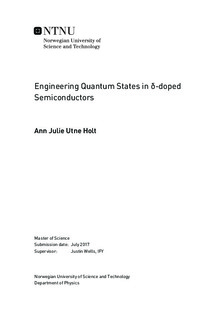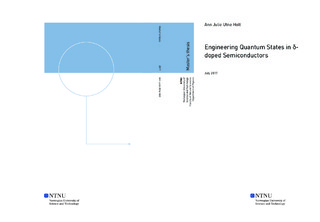| dc.description.abstract | The effect of quantum confinement, creating a two-dimensional electron gas was studied using angle-resolved photoemission spectroscopy. This was done by creating phosphorus δ-layers in silicon, varying in thickness from an atomically sharp doping profile to a 4.0 nm layer. The location of theoretically predicted, but experimentally undiscovered, quantum well states known as 1∆ was revealed, validating density functional theory calculations developed for describing Si:P δ-layer systems. Verification of these states contributes to the development of accurate models describing the behaviour of δ-layer derived devices. Further, the electronic band structure of boron-doped thin film (1.8 nm) diamond was uncovered and compared to that of thick film (> 3 μm). Although diamond and silicon share several crystallographic properties, it was found that confinement induced different effects in these materials. Two-dimensional electron states were induced in silicon already for dopant layers of 4.0 nm, and a valley splitting of 120 meV was created between the two most occupied bands upon reaching a 2.0 nm doping profile. A confinement of 1.8 nm was shown to have little effect on the diamond band structure, however. The surface δ-doped thin film displayed negligible differences from its bulk counterpart, supporting the notion of utilising thin film diamond in miniaturised systems. | |

